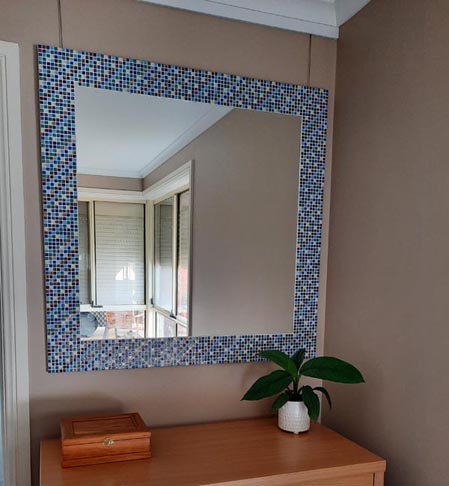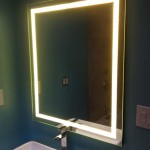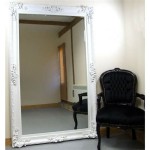Mounting a Mirror on a Plaster Wall: A Comprehensive Guide
Plaster walls, while aesthetically pleasing, can sometimes pose a challenge when it comes to hanging heavy objects like mirrors. Unlike drywall, which is relatively soft and can be easily penetrated by screws, plaster is denser and harder, requiring a different approach for successful mounting. This article provides a comprehensive guide to mounting a mirror on a plaster wall, ensuring both secure and damage-free installation.
Assessing the Wall and Mirror
The first step is to assess the wall and the mirror itself. This involves identifying the type of plaster you are dealing with:
- Traditional Plaster: This is the older type, typically found in older homes, and is made of a mixture of lime, sand, and water. Traditional plaster is relatively hard and requires specialized techniques for mounting.
- Plasterboard: This is a more modern type and is essentially a gypsum board covered with a thin layer of plaster. It is easier to work with compared to traditional plaster.
Next, consider the weight and size of the mirror. Heavier mirrors will demand stronger anchoring, while smaller mirrors can potentially be mounted with less robust methods.
Choosing the Right Mounting Method
The choice of mounting method depends on the type of plaster and the mirror's weight. Here are some common options:
1. Using Toggle Bolts:
Toggle bolts are ideal for traditional plaster walls and heavier mirrors. These bolts consist of a threaded rod with a wing nut and a "toggle" that expands inside the wall cavity when tightened. They provide strong support by distributing the weight over a larger area.
2. Utilizing Drywall Anchors:
Drywall anchors are plastic or metal devices that are inserted into a pre-drilled hole and expand to create a secure hold. They are suitable for plasterboard walls and lighter mirrors.
A common type is the "Molly bolt," which is a metal screw with a spring-loaded, expandable sleeve, making it effective in plasterboard.
3. Applying Adhesive Mounting Strips:
For smaller, lighter mirrors, adhesive mounting strips can be a viable option. These strips are typically made of strong, double-sided tape and come in a variety of sizes to accommodate different mirror dimensions. Ensure the surface is clean and dry before applying the strips. This method is generally not recommended for heavy mirrors due to its limitations in weight capacity.
Mounting the Mirror
Once you have selected the appropriate mounting method, follow these steps:
- Locate Studs: If possible, try to mount the mirror directly into a stud for maximum stability. Use a stud finder to locate the studs in the wall.
- Mark the Location: Carefully mark the desired location for the mirror on the wall using a pencil.
- Pre-Drill Holes (If Necessary): For toggle bolts or drywall anchors, use a drill bit slightly smaller than the anchor's diameter to create a pilot hole at the marked location.
- Install Anchors or Bolts: Insert the chosen anchor or toggle bolt into the pilot hole and tighten it securely using a screwdriver or wrench.
- Attach the Mirror: Hang the mirror on the anchors or bolts, ensuring it is level and securely attached.
- Level and Secure: Use a level to ensure the mirror is perfectly straight. If necessary, adjust the mounting points until the mirror is level. Once satisfied, secure it firmly to the wall.
Important Considerations
Here are some additional points to bear in mind:
- Safety First: Always wear safety goggles and gloves when drilling or hammering on plaster walls. Be mindful of the potential for dust and debris.
- Measure Twice, Cut Once: Ensure accurate measurements before drilling any holes to avoid damage to the wall.
- Test the Load: Before hanging a heavy mirror, test the anchor or bolt by applying a moderate amount of weight to ensure its stability.
- Professional Assistance: If you are uncertain about mounting a large or heavy mirror, it is always advisable to consult a professional for assistance. They can ensure the mirror is securely and safely attached, minimizing the risk of damage or accidents.
By following the steps outlined above, you can successfully mount a mirror on a plaster wall, creating a stylish and functional addition to your home décor. Remember to choose the appropriate mounting method based on the wall type, mirror size, and weight, and always prioritize safety throughout the process.

Hanging Heavy Mirror On Plaster Walls 6 Steps With Pictures Instructables
:strip_icc()/ScreenShot2022-04-28at1.12.19PM-e055476c70c6438585fa7c5cd531edcf.png?strip=all)
4 Easy Ways To Hang A Heavy Mirror

Hanging Heavy Mirror On Plaster Walls 6 Steps With Pictures Instructables

How To Hang A Mirror On Plaster Wall With Geefix

How To Hang A Very Heavy Picture Or Mirror The Best
How To Hang A 100 Pound Mirror On Drywall Quora

How To Hang A Large Or Heavy Mirror

How To Hang Curtains On Plaster Walls
Hanging Heavy Framed Mirrors Lath Plaster Walls The Picture Framers Grumble

How To Hang A Heavy Mirror On Plaster Wall Walls








